Are you tired of your ads being ignored, scrolled past, or worse, blocked? In today’s digital landscape, capturing your audience’s attention has become an art form. Enter native advertising – the game-changer that’s revolutionizing how brands connect with consumers.
Imagine seamlessly blending your message into the content your audience already loves. That’s the power of native advertising. With an impressive 8.8 times higher click-through rate than traditional display ads, it’s no wonder marketers are flocking to this strategy. But here’s the catch: mastering native advertising isn’t as simple as it seems. From choosing the right platforms to crafting compelling content, there’s a lot to navigate.
That’s where “The Ultimate Guide to Native Advertising Success” comes in. We’ll walk you through everything you need to know, from understanding the basics to measuring your success. You’ll discover the various types of native ads, learn best practices from industry experts, and explore future trends that will keep you ahead of the curve. Ready to transform your advertising game? Let’s dive in and unlock the potential of native advertising together!
Table of Contents
Native Advertising Meaning
A. Definition and evolution
Native advertising is a promotional strategy designed to seamlessly blend with its surrounding media environment, offering you a more natural and engaging experience compared to traditional advertising methods. You’ll find that native ads are characterized by three key elements:
- Paid opportunity
- Familiarity with the audience
- Non-disruptive user experience
While you might think native advertising is a recent phenomenon, it actually has historical roots. A prime example is the Michelin Guide, which effectively promoted the brand without directly mentioning its products. This showcases how native advertising has evolved over time to become more sophisticated and integrated into various media platforms.
B. Comparison with traditional display ads
When comparing native advertising to traditional display ads, you’ll notice significant differences:
| Aspect | Native Advertising | Traditional Display Ads |
|---|---|---|
| Integration | Blends seamlessly with content | Stands out from surrounding content |
| User Experience | Non-disruptive | Can be interruptive |
| Engagement | Higher engagement rates | Lower engagement rates |
| Format | Information-based | Promotional and product-focused |
| Targeting | Contextually relevant | Often based on demographics |
C. Key characteristics and formats
As you delve into native advertising, you’ll encounter several key characteristics and formats:
- Contextual relevance: Native ads are designed to match the look, feel, and function of the media format in which they appear.
- Transparency: Successful native advertising campaigns openly identify their sponsorship, maintaining audience trust.
- Value-driven content: Native ads often provide informative or entertaining content, rather than direct product promotion.
- Diverse formats: You’ll find native ads in various forms, including:
- In-feed ads
- Sponsored content
- Recommended content widgets
- Branded content
- In-feed ads
To maximize the effectiveness of your native advertising efforts, consider these factors:
- Visibility
- Frequency
- Quality of calls-to-action
- Overall presentation
By understanding these key aspects of native advertising, you’re better equipped to create campaigns that resonate with your target audience and achieve your marketing objectives.
Now that we’ve covered the fundamentals of native advertising, let’s explore the numerous benefits this approach offers to marketers and businesses in the next section, “Benefits of Native Advertising.”
Benefits of Native Advertising

Now that we’ve explored the concept of native advertising, let’s dive into the numerous benefits it offers. Understanding these advantages will help you leverage this powerful marketing strategy effectively.
Higher engagement and click-through rates
Native advertising significantly outperforms traditional advertising methods when it comes to user engagement. You’ll find that:
- Native ads achieve higher click-through rates (CTRs) compared to conventional ads
- Users are more likely to engage with content that seamlessly blends into their browsing experience
- The non-disruptive nature of native ads resonates well with audiences, encouraging interaction
Research indicates that native ads employing a trust-based approach can yield substantially higher CTRs than their traditional counterparts.
Improved user experience
You’ll appreciate how native advertising enhances the overall user experience:
- Native ads are non-intrusive, allowing users to engage with content actively
- Unlike disruptive ads (e.g., YouTube pre-roll), native ads don’t interrupt the user’s browsing flow
- The seamless integration into editorial context makes native ads feel valuable rather than intrusive
This improved experience leads to higher user satisfaction and potentially increased time spent on your platform or content.
Enhanced brand perception and trust
Native advertising can significantly boost your brand’s credibility:
- Tailored content aligns with individual search intents, fostering trust
- High-quality, relevant content positions your brand as a valuable resource
- Clear labeling of native ads maintains transparency, avoiding user deception
| Factor | Impact on Brand |
|---|---|
| Content Relevance | Increases perceived value |
| Quality Visuals | Enhances engagement and retention |
| Transparent Labeling | Builds trust and credibility |
Cost-effectiveness
You’ll find native advertising to be a cost-effective marketing strategy:
- Native ads maintain consistent performance and pricing as you scale your campaigns
- Unlike traditional platforms, native advertising doesn’t typically experience inflated costs per acquisition (CPA) with increased budgets
- The ability to reach broader audiences across various websites, not just specific social media platforms, offers better value for your investment
With these benefits in mind, next, we’ll explore the various types of native advertising you can leverage to maximize your marketing efforts.
Types of Native Advertising
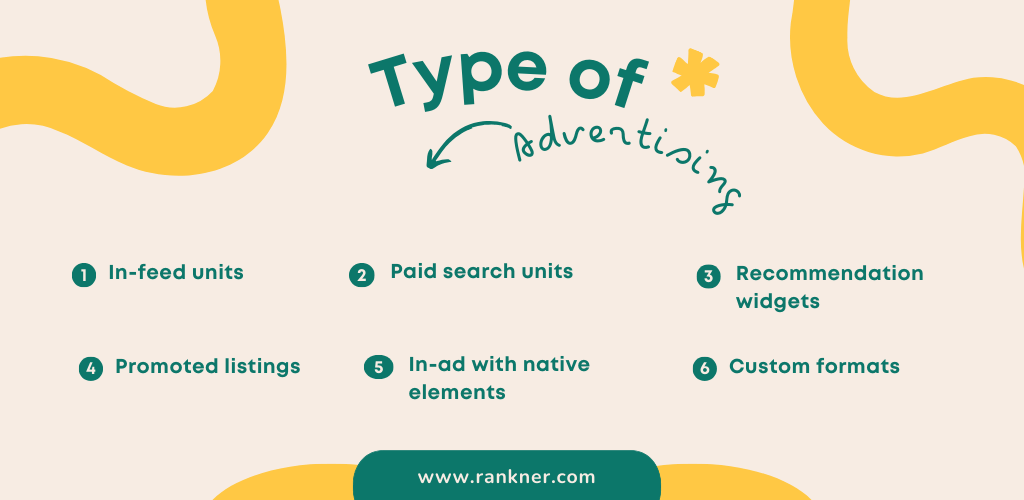
Now that we’ve explored the benefits of native advertising, let’s dive into the various types you can leverage for your campaigns. Understanding these different formats will help you choose the most effective approach for your marketing goals.
A. In-feed units
In-feed units are seamlessly integrated into social media feeds or content platforms. These ads are designed to blend with the surrounding content, providing a non-disruptive user experience. You’ll often find these on platforms like Facebook, Instagram, or LinkedIn, where they appear as sponsored posts within your regular feed.
B. Paid search units
While there’s some debate about their classification, paid search units are often considered a form of native advertising. These are the sponsored results you see at the top of search engine results pages. They match the look and feel of organic search results, making them less intrusive to users while still driving significant visibility for your products or services.
C. Recommendation widgets
You’ve likely encountered recommendation widgets at the bottom of articles or on sidebar sections of websites. These units suggest related or sponsored content, often labeled as “recommended” or “sponsored.” They’re an excellent way to extend your reach and engage users who are already consuming similar content.
D. Promoted listings
Promoted listings are particularly effective on e-commerce platforms. These native ads appear alongside organic product listings, enhancing visibility for your offerings. By matching the design of regular product listings, they provide a seamless shopping experience while boosting your product’s chances of being discovered.
E. In-ad with native elements
This format combines traditional display ad inventory with native elements. By incorporating aspects that blend with the surrounding content, these ads can expand your reach while maintaining a degree of native feel. They’re a bridge between conventional display advertising and fully native formats.
F. Custom formats
Some platforms offer custom native advertising solutions that don’t fit neatly into the above categories. These bespoke formats allow for more creativity and can be tailored to specific publisher sites or platforms. An example is Forbes’ BrandVoice, which enables brands to create dedicated content spaces within the publication.
Here’s a quick comparison of these native ad types:
| Type | Placement | User Experience | Best For |
|---|---|---|---|
| In-feed units | Social media feeds, content platforms | Seamless, non-disruptive | Brand awareness, engagement |
| Paid search units | Top of search results | Matches organic results | Direct response, sales |
| Recommendation widgets | End of articles, sidebars | Suggestive, content discovery | Content promotion, traffic |
| Promoted listings | E-commerce platforms | Integrated with product listings | Product visibility, sales |
| In-ad with native elements | Display ad spaces | Blend of traditional and native | Reach expansion |
| Custom formats | Varies by platform | Tailored to specific environments | Unique brand storytelling |
As you consider these different types of native advertising, remember that each has its strengths and is suited to different goals. Your choice should align with your target audience, campaign objectives, and the platforms where your audience is most active.
With this understanding of native ad types, you’re now ready to explore the various platforms and channels available for native advertising, which we’ll cover in the next section.
Platforms and Channels for Native Advertising
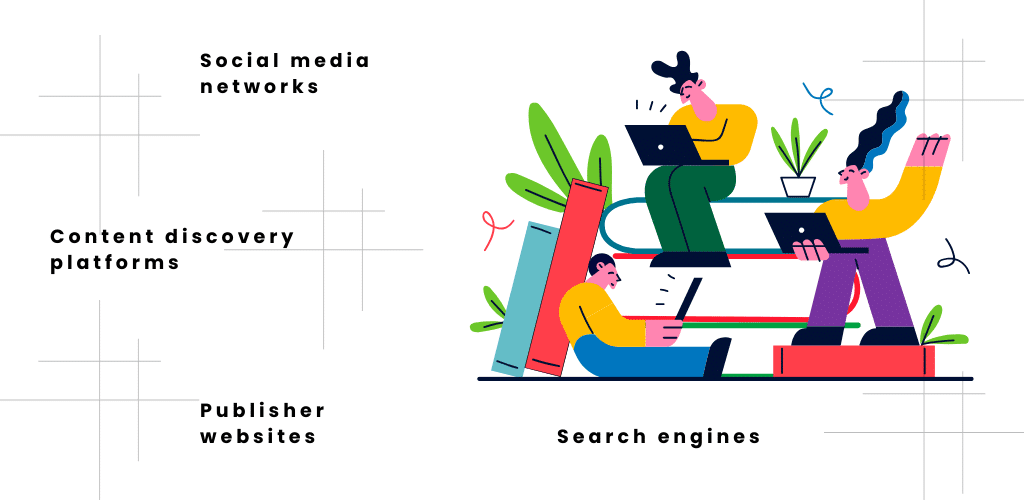
Now that we’ve explored the various types of native advertising, let’s delve into the platforms and channels where you can effectively implement your native ad campaigns. Understanding these platforms is crucial for maximizing the impact of your native advertising efforts.
Social media networks
Social media platforms offer a prime environment for native advertising. Here, your sponsored content can seamlessly blend with users’ feeds, increasing engagement and brand recall. You’ll find that native ads on social media can achieve up to 40% higher engagement rates compared to traditional display ads.
Content discovery platforms
Content discovery platforms are essential tools in your native advertising arsenal. These platforms connect advertisers with publishers, facilitating the distribution of sponsored content across various websites. Here’s a comparison of some top native ad platforms for 2024:
| Platform | Advantages | Disadvantages |
|---|---|---|
| Outbrain | Diverse ad options, extensive reach | May be pricier |
| Taboola | Broad audience access, ease of use | – |
| Nativo | Focus on user experience and privacy | Smaller reach |
| Yahoo Gemini | Access across various channels | Fluctuating pricing |
| Strossle | Emphasis on creative ad formats | More niche reach |
Search engines
Search engines provide another valuable channel for native advertising. By leveraging programmatic advertising platforms, you can automate the connection between your ads and potential customers searching for related content. This approach allows for targeted reach and improved campaign optimization.
Publisher websites
Many publisher websites offer native advertising opportunities, allowing you to place your content alongside editorial pieces. This strategy can significantly boost your brand’s credibility and engagement rates. When selecting publisher websites, consider factors such as:
- Audience alignment
- Site reputation
- Ad format options
- Pricing models
As you explore these platforms and channels, remember that the key to successful native advertising lies in selecting the right ad network and tailoring your campaigns to specific audiences. In the next section, we’ll dive into the best practices for creating and implementing successful native advertising campaigns across these platforms.
Best Practices for Successful Native Advertising

Now that we’ve explored the various platforms and channels for native advertising, let’s dive into the best practices that will help you achieve success in your native advertising campaigns.
Creating high-quality, relevant content
To make your native ads truly effective, you need to focus on crafting compelling content that resonates with your audience. Here are some key tips to keep in mind:
- Craft attention-grabbing headlines: Pose relatable questions or use intriguing statements to capture your audience’s interest.
- Write engaging descriptions: Clearly summarize the value of your content, drawing directly from the original piece to highlight its benefits.
- Use natural language: Adopt a conversational tone to foster engagement and relatability. Avoid complex or formal language that might alienate your readers.
- Include a clear call-to-action (CTA): Clearly state the desired action you want your audience to take, such as signing up for a free trial or downloading a resource.
Aligning with platform’s tone and style
To ensure your native ads blend seamlessly with the surrounding content, you need to adapt your approach to each platform:
- Match the look and feel of the media where your ad appears
- Tailor your content to the unique preferences of different age groups (e.g., Baby Boomers, Millennials, Gen Z)
- Experiment with various ad formats like carousels and storyboard ads to find what works best for each platform
Ensuring transparency and proper labeling
Transparency is crucial in native advertising to maintain trust with your audience and comply with regulations:
- Clearly label your content as sponsored or advertising to avoid misleading consumers
- Use explicit sponsored labels to improve audience receptivity
- Ensure that any links or content shared on social media or other platforms also carry clear disclosures
Targeting the right audience
To maximize the effectiveness of your native ads, you need to focus on reaching the right people:
- Research your target demographics thoroughly
- Personalize your messages to resonate with specific audience segments
- Leverage tracking pixels for comprehensive user behavior analysis
- Create device-targeted campaigns to optimize performance across different platforms
| Best Practice | Why It’s Important |
|---|---|
| Quality Content | Captures and retains consumer interest |
| A/B Testing | Optimizes ad performance through data-driven insights |
| UX on Landing Pages | Enhances engagement and conversion rates |
| Storytelling | Strengthens brand connection and differentiation |
By implementing these best practices, you’ll be well on your way to creating successful native advertising campaigns. With your strategy in place, it’s time to consider how you’ll measure the success of your efforts. In the next section, we’ll explore the key metrics and methods for evaluating your native advertising performance.
Measuring Native Advertising Success

Now that we’ve covered the best practices for successful native advertising, it’s crucial to understand how to measure the effectiveness of your campaigns. By tracking the right metrics, you can optimize your native advertising efforts and ensure a high return on investment.
A. Key performance indicators (KPIs)
To gauge the success of your native advertising campaigns, you need to focus on specific KPIs that align with your goals. Here are some essential KPIs to consider:
- Click-Through Rate (CTR): This metric measures user interest by comparing clicks to views, helping you improve ad elements.
- Conversion Rate: It indicates the percentage of users who take desired actions after clicking on your ad.
- Viewable Impressions: This ensures that your ads are actually seen by users, not just served.
- Cost Per Acquisition (CPA): It evaluates the financial efficiency of your campaigns by calculating the cost to acquire a customer.
- Return on Investment (ROI): This crucial metric measures the financial return relative to your advertising costs.
B. Engagement metrics
Engagement metrics provide insights into how users interact with your native content:
| Metric | Description |
|---|---|
| Bounce Rate | Reflects user engagement by assessing the percentage of visitors leaving after viewing one page |
| Engagement Rate | Measures user interaction through social shares, comments, and time spent on site |
| Time Spent on Site | Indicates content engagement by measuring how long users remain on the site after interacting with ads |
Additionally, for video promotions, track metrics such as video views and completion rates to gauge audience interest.
C. Conversion and ROI tracking
To effectively measure the impact of your native advertising on your bottom line, focus on:
- Conversions: Track both macro and micro actions driven by your ads, such as:
- App downloads
- Newsletter sign-ups
- Direct sales
- App downloads
- Attribution models: Use these to determine the effectiveness of various touchpoints in the customer journey:
- Last click attribution
- Linear distribution
- Position-based
- Time decay models
- Last click attribution
- Brand Lift: Assess changes in brand perception and awareness resulting from your campaigns.
By continuously monitoring these metrics, you’ll be able to make informed decisions and enhance the overall effectiveness of your native advertising efforts. Remember to align your native advertising goals with broader business objectives for maximum impact.
With this comprehensive understanding of measuring native advertising success, you’re now better equipped to tackle the challenges and considerations that come with implementing these strategies. In the next section, we’ll explore the potential hurdles you may face and how to overcome them.
Challenges and Considerations
Now that we’ve explored how to measure the success of your native advertising campaigns, it’s crucial to understand the challenges and considerations you’ll face in this dynamic field. Let’s dive into the key areas you need to be aware of as you navigate the world of native advertising.
Transparency and ethical concerns
You must prioritize transparency in your native advertising efforts. As consumers become increasingly skeptical, especially younger generations, it’s essential to maintain their trust. Here are some key points to consider:
- Clearly label your native ads as sponsored content to comply with FTC guidelines
- Use appropriate terminology that doesn’t mislead your audience
- Strike a balance between seamless integration and honest disclosure
Remember, while native ads aim to blend with editorial content, you should never compromise on transparency. Your audience’s trust is paramount.
Ad fatigue and content quality
To combat ad fatigue and maintain high content quality, consider the following:
- Develop a robust content creation strategy
- Focus on delivering immediate value to your audience
- Ensure your native ads align with user interests and search intent
- Collaborate with multiple professionals to create high-quality, engaging content
| Aspect | Importance |
|---|---|
| Relevance | High |
| Visual appeal | Medium |
| Seamless integration | High |
| Value proposition | Critical |
Legal compliance (FTC guidelines, GDPR)
You must navigate the complex landscape of legal compliance to protect your brand and respect consumer rights. Key areas of focus include:
- FTC guidelines: Ensure clear disclosure of sponsored content
- GDPR: Respect user privacy and data protection regulations
- Platform-specific rules: Adhere to guidelines set by individual native ad platforms
By staying compliant, you not only avoid potential legal issues but also build trust with your audience.
As you address these challenges and considerations, remember that native advertising continues to offer substantial advantages. With this in mind, next, we’ll explore future trends in native advertising that will shape the industry and help you stay ahead of the curve.
Future Trends in Native Advertising

Now that we’ve explored the challenges and considerations in native advertising, let’s turn our attention to the exciting future trends shaping this dynamic field.
AI and Machine Learning Integration
As you navigate the evolving landscape of native advertising, you’ll find artificial intelligence (AI) and machine learning at the forefront of innovation. These technologies are revolutionizing how you can:
- Analyze user data for hyper-personalized ad experiences
- Optimize ad placements in real-time
- Increase content production efficiency
However, it’s crucial to remember that while AI tools can boost your content output, quality should never be compromised. You’ll need to focus on creating high-impact, authentic content that resonates with your audience.
Rise of Native Video Ads
Video content is becoming increasingly critical in your native advertising strategy. You’ll want to explore:
- Short-form videos
- Live video content
- Interactive video experiences
These formats are particularly effective in capturing audience attention on mobile devices. As you develop your video strategy, consider the following trends:
| Video Trend | Benefits | Considerations |
|---|---|---|
| Vertical videos | Mobile-friendly, immersive | Requires format-specific production |
| Live streaming | Real-time engagement | Needs careful planning and execution |
| Interactive videos | Higher engagement rates | May require specialized tools |
Augmented Reality Applications
Augmented reality (AR) is opening up new frontiers in native advertising. You can leverage AR to create immersive experiences that blend seamlessly with users’ environments. Consider these applications:
- Virtual try-ons for products
- Interactive brand storytelling
- Location-based AR advertisements
As you explore AR, remember to focus on creating value for your audience rather than just novelty.
With these future trends in mind, you’re well-equipped to stay ahead in the native advertising game. Next, we’ll delve into case studies and examples that illustrate these trends in action, providing you with practical insights to apply to your own campaigns.
Case Studies and Examples

Now that we’ve explored the future trends in native advertising, let’s dive into real-world examples and learn from industry leaders who have mastered this art. By examining these case studies, you’ll gain valuable insights to enhance your own native advertising strategies.
Successful native advertising campaigns
ELLE and DOVE: Challenging Beauty Norms
You’ll find inspiration in ELLE and DOVE’s collaboration, which seamlessly blended product promotion with a powerful social message. Their campaign challenged traditional beauty standards while introducing a new deodorant line. This approach demonstrates how you can align your brand values with content that resonates deeply with your audience.
Coca-Cola: Supporting Local Sports
Coca-Cola’s campaign supporting local sports clubs showcases the power of storytelling in native advertising. By creating engaging narratives around community involvement, you can forge stronger connections with your target audience while promoting your brand.
Stimorol: Summer Vibes and Music
Stimorol’s music competition, created with Storybook, is a prime example of how you can leverage influencer marketing in your native advertising efforts. By associating your brand with positive summer experiences, you can create a lasting impression on your audience.
Lessons learned from industry leaders
- Authenticity is key: Brands like The Onion and H&R Block demonstrate that humor can be an effective tool when it aligns with your brand voice and audience expectations.
- Seamless integration: Fast Company’s infographic for UPS shows how native ads can blend perfectly with regular content, enhancing user experience.
- Transparency matters: With 51% of consumers expressing doubt about native ad authenticity, it’s crucial to maintain clear labeling and transparency in your campaigns.
- Align with audience values: Successful campaigns like Monash Business School’s collaboration with BBC Storyworks highlight the importance of showcasing innovation and thought leadership.
- Interactive content engages: Intact Insurance’s quiz on safe driving proves that interactive elements can educate users while promoting your products or services.
Here’s a quick comparison of successful native ad types:
| Ad Type | Example | Key Benefit |
|---|---|---|
| In-Feed | BuzzFeed’s sponsored posts | Seamless integration with regular content |
| Branded Content | Altran Engineering’s Hyperloop video | Showcases expertise and innovation |
| Interactive | Mercedes’s tech-focused content | Engages users while highlighting brand strengths |
| Storytelling | Land Rover’s Dragon Challenge | Creates memorable brand experiences |
By studying these examples and applying the lessons learned, you’ll be better equipped to create native advertising campaigns that not only promote your brand but also provide value to your audience. Remember, the key to success lies in balancing promotional goals with meaningful, engaging content that resonates with your target market.
Native advertising has emerged as a powerful tool in the digital marketing landscape, offering brands a unique way to engage audiences without disrupting their online experience. As you’ve learned throughout this guide, native ads seamlessly blend with the platform’s content, resulting in higher engagement rates and improved brand perception compared to traditional display advertising.
By understanding the various types of native advertising, leveraging appropriate platforms, and following best practices, you can create compelling campaigns that resonate with your target audience. Remember to measure your success using key metrics and stay informed about future trends, such as AI-driven personalization and native video ads.
As you navigate the challenges and considerations of native advertising, always prioritize transparency and authenticity to build trust with your audience. With the right approach, native advertising can become a cornerstone of your marketing strategy, driving traffic, increasing brand awareness, and ultimately boosting your bottom line.

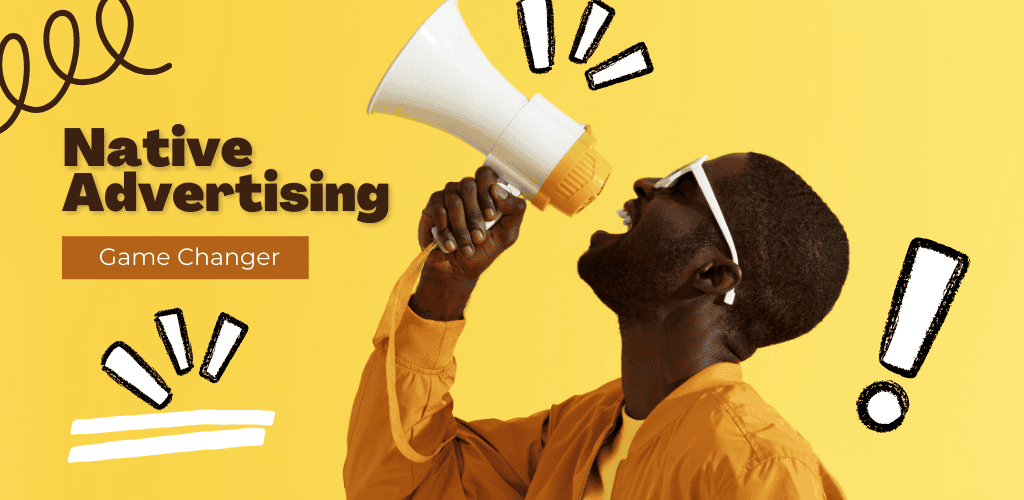




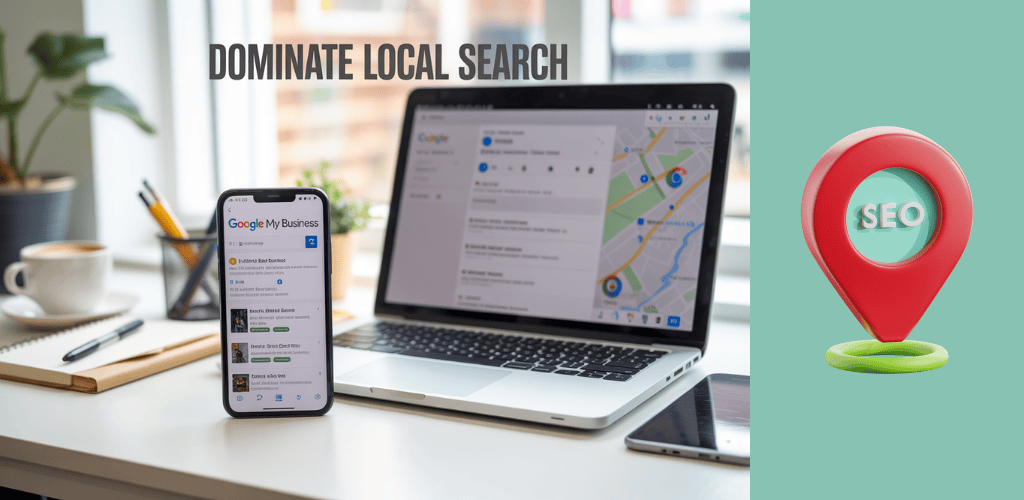
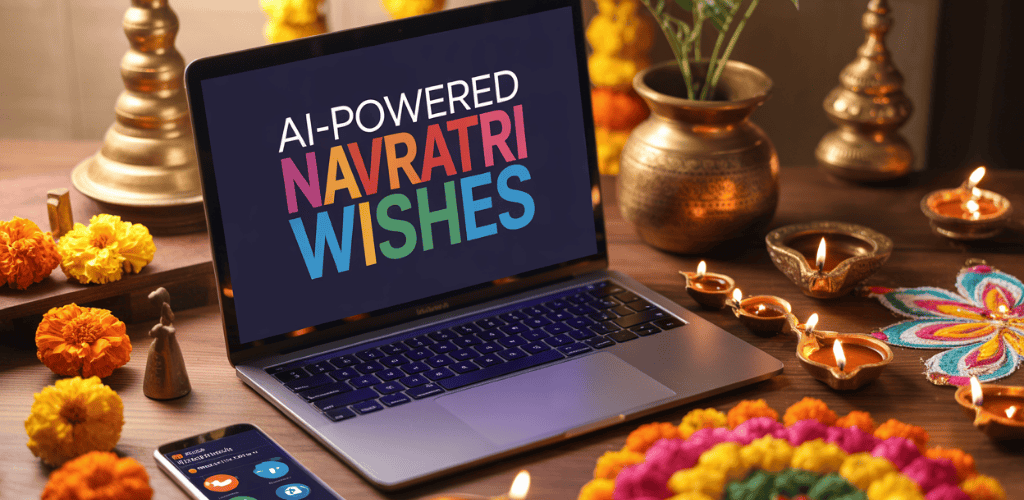
[…] native advertising – the game-changer that’s revolutionizing digital marketing. With engagement rates up to […]
[…] Native advertising: the chameleon of the digital marketing world. You’ve probably encountered it without even realizing it. That article you read about sustainable living? The podcast episode discussing financial wellness? They might just be cleverly disguised advertisements. […]
[…] it’s essential to grasp the fundamental differences between native ads vs banner ads. Native ads are designed to blend seamlessly with the platform on which they appear. They mimic the look and […]